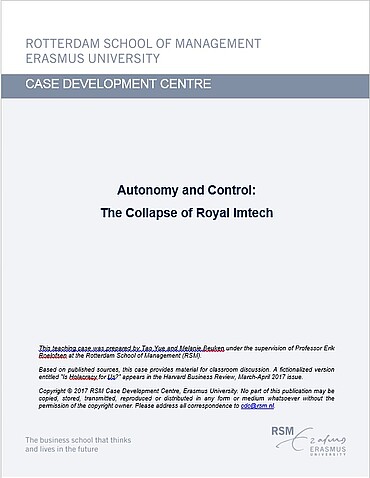Citation Note
Based on field research; 7 pages.
Follow the 'handle' link to access the Case Study on RePub.
For EUR staff members: the Teaching Note is available on request, you can contact us at rsm.nl/cdc/contact/
For external users: follow the link to purchase the Case Study and the Teaching Note.
Objective
After discussing the case, students should be able 1. To understand that the benefits of autonomy require a delicate balance with control. 2. To explain how corporate culture can become a risk factor. 3. To analyze the conditions required to allow autonomy and entrepreneurship to work. 4. To explore how companies that face a crisis can communicate effectively.
Abstract
In 2012, the Dutch construction company Royal Imtech was the stock markets’ darling. Its results were rocksteady and the company recorded consistent growth, mainly through acquisitions. The CEO and CFO formed a close duo that kept repeating their mantra: the secret to the success of Royal Imtech was local entrepreneurship. However, underneath the bright surface was a company that was on the edge of its collapse. The dogmatic approach to entrepreneurship and autonomy resulted in a leadership team that was out of control. Local managers bamboozled leadership, making them believe in fabricated profits. The German CEO engaged in collusion, outright fraud, and corruption in order to maintain the success story. With projects that had become larger and larger, losses could no longer be swept under the rug. When an analyst noticed that the numbers of Royal Imtech smelled fishy, he ushered Royal Imtech into its eventual bankruptcy.
